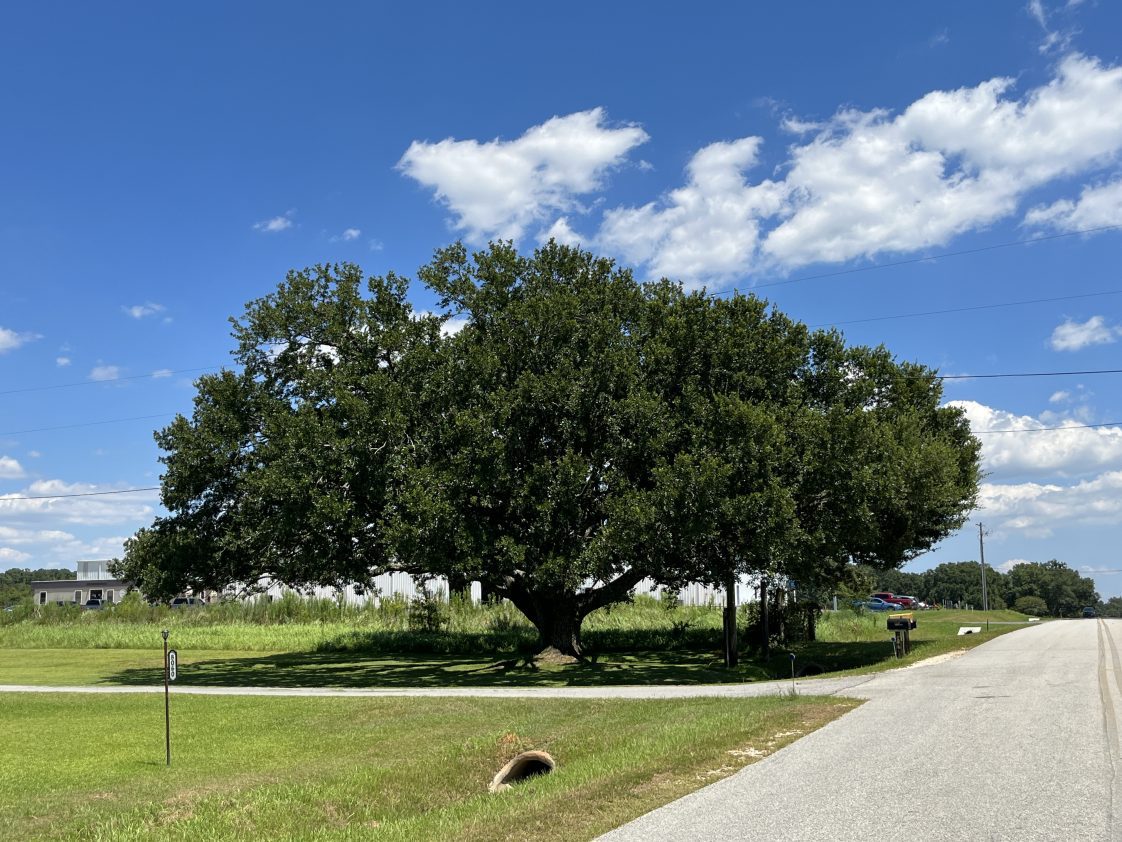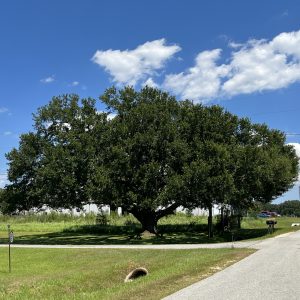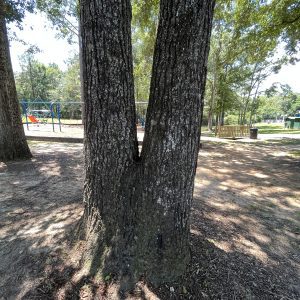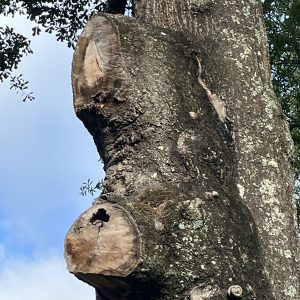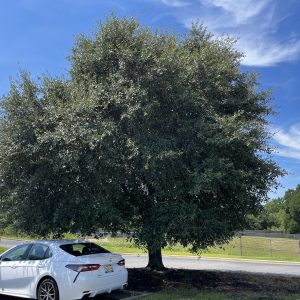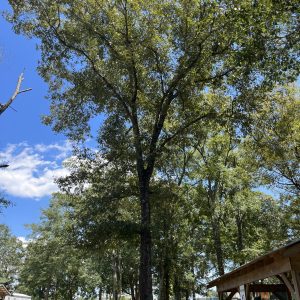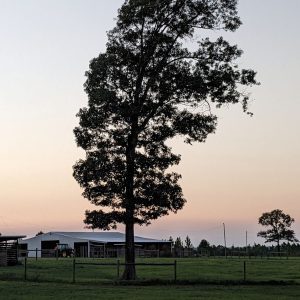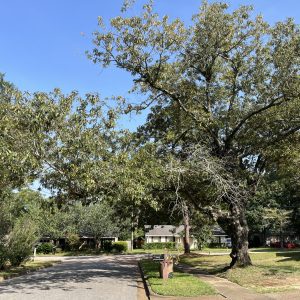Lawn & Garden

October marks a great time to take stock of the trees in your landscape and evaluate their condition. Soon, the trees will begin to shed their leaves, making it easier to assess their structure and evaluate the risks they may pose. Trees provide many benefits, but those benefits come with some risk. Often these risks can be reduced or mitigated by improving the tree’s structure through corrective pruning. Structural pruning of young trees, subordinating codominant leaders, crown balancing, and reduction of overextended limbs are some of the ways you can improve tree structure and reduce risk. A basic understanding of these practices can help you determine if your trees need work, what kind of pruning is needed, and avoid common mistakes.
Terms
- Apical dominance – A condition in which the main stem/trunk or main branch is dominant (grows more vigorously) over the smaller trunks or lateral branches.
- Codominant stem – A stem (or branch) growing at about the same rate and with nearly the same diameter as another stem (or branch) originating from the same union.
- Reduction – Pruning that decreases height and/or spread on an entire tree.
- Reduction cut – Pruning cut that reduces the length of a branch or stem back to a live lateral branch that is large enough to take apical dominance (at least 1/3 the diameter of the parent branch). Essentially, reduction cuts remove the larger diameter branch at a fork.
- Removal cut – Pruning that removes a branch back to the trunk or parent stem. Removal cuts remove entire branches or the smaller diameter branch at a fork.
- Scaffold – Permanent branches that make up the structure of a tree.
- Subordinate – Slowing the growth rate on a stem or branch by removing its terminal or end portion.
- Figure 1. A tree with an evenly balanced canopy and good branching structure has a lower likelihood of failure.
- Figure 2. Codominant stems have an inherently weak union and are often points of failure.
- Figure 3. Larger diameter pruning cuts allow for the entry of decay fungi into the trunk.
- Figure 4. Young, vigorous trees often grow like a big bush. Structural pruning early in life can greatly reduce the chances of structural issues later in life.
General Guidelines
The following are some general guidelines that can be applied when having your trees pruned. Not all of these guidelines are set in stone and this is not a comprehensive list.
- Avoid removing more than 25 percent of the canopy in a single pruning.
- Avoid cuts on limbs with a diameter of 4 inches and above when possible. Consider multiple smaller reduction cuts before removing larger diameter limbs.
- The periphery (the ends of the branches) should be the pruning zone. Avoid removing branches on the interior of the canopy when possible.
- Nearly all pruning cuts should be reduction cuts, and removal cuts should generally be avoided. Reduce, not remove.
- Avoid removing branches back to the trunk, as this exposes the trunk to decay.
- Pruning cuts on limbs should always terminate at another branch or fork. Stub cuts lead to structural issues and can increase the likelihood of branch failure.
- Pruning should be done on a regular basis. This will ensure that most pruning cuts are done on young, smaller-diameter wood.
- The amount of pruning should be dictated by the vigor of the tree. More vigorous trees can withstand more pruning than stressed trees will.
- Younger trees will typically respond to pruning better than mature trees, so remove less canopy from mature trees.
- It is generally accepted that it is better to prune while the tree isn’t actively growing (dormant).
Structural Pruning of Young Trees
Structurally pruning young trees is possibly the most effective thing that can be done to increase the odds of a tree being structurally sound at maturity. Younger trees respond better to pruning than mature trees do, and defects can be easier corrected or avoided altogether. One advantage to pruning a tree when it is young is that the cuts are made on smaller-diameter wood, as cuts on wood above 3 to 4 inches in diameter may have heartwood in the center, which is more susceptible to decay. When structurally pruning young trees, the objectives should be the following:
- Develop a strong, dominant leader using reduction cuts to subordinate competing and codominant branches and stems.
- Select scaffold branches that have a wider angle of attachment to the trunk, and remove those with narrow (weaker) angles of attachment.
- Remove branches that are too close together, and ensure even spacing of branches on the trunk.
- Figure 5. Subordinating the codominant stem on the right would help reestablish a strong central leader and reduce the mechanical stress on the branch union.
- Figure 6. Reduction cuts could be made to subordinate the codominant stems and reduce the branches on the right side to bring the center of gravity back over the trunk.
- Figure 7. The overextended limb over the road could be reduced back to a lateral branch, shortening the limb and reducing the weight and likelihood of branch failure. This would also serve to rebalance the canopy.
Subordinate Codominant Stems
Codominant stems are often weakly attached and can be points of failure. However, rather than removing codominant stems back to the parent branch or trunk, it is typically better to subordinate. By performing reduction cuts on it, you suppress its growth and allow the main branch or trunk to assume apical dominance without the need for a large pruning cut at the trunk. This also reduces the mechanical stress on the union of the codominant stems, reducing the likelihood of failure.
Imbalanced Crown
Trees with imbalanced crowns tend to have higher rates of failure, particularly when it comes to storms. Reduction cuts can be made to the heavier side to recenter the canopy over the trunk. Correcting imbalances early is desirable, as you can avoid making cuts on larger diameter branches.
Overextended Limbs
Often, the older, larger branches in a mature tree will get overextended if not previously reduced. These long branches can be heavy and at risk of failing. This can be of particular concern when it is over the roof of a house. While removal of these large branches may seem like the safest move, it often isn’t the best option. Reducing the limb back to a smaller lateral branch can reduce the risk with less of impact to the tree. Total removal of large limbs exposes the trunk to decay and can also affect the balance of the canopy. Note that insurance companies may require a letter from an arborist confirming that reduction is a better course of action when over a home.
Getting the Work Done
Finding someone with the skill set to do the job right can be a daunting task. Familiarizing yourself with the terms and concepts in this Extension Brief can help you make an informed discussion with potential contractors. The following are some things to keep in mind when talking with contractors:
- ISA Certified Arborist credentials are a plus. Search for an arborist or check credentials at treesaregood.org.
- Request proof of insurance and bonding.
- Request a list of references.
- Get multiple opinions/quotes.
- Get the specs of the work in writing and in detail.
- Be on-site to observe the work.

